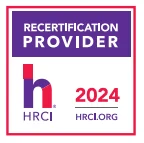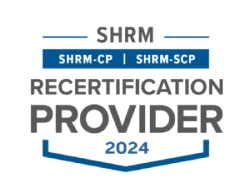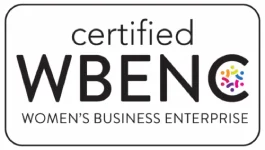Four Steps to Create a Stable Renewal Environment

Large renewal rate increases frustrate employers and plan sponsors each year. They might experience significant, double-digit rate hikes one year; a smaller uptick the second; and another large increase the third year. Owners, CFOs, and HR executives would prefer stable, predictable trends so they can better budget for future costs.
Too often, companies send out requests for proposals, cross our fingers, and hope for the best. However, that approach seldom works. To paraphrase a quote often mistakenly attributed to Albert Einstein, one shouldn’t do the same thing over and over and expect different results. The answer is for employers to become more proactive and take strategic measures to change the pattern.
Here are four steps company leaders can take to address the underlying issues driving high renewals rate and create a more stable renewal environment.
Proper Underwriting
In the current environment, traditional underwriting practices and inefficient funding mechanisms lead carriers to overact to large claims activities. Vendors see a spike in claims; they assume that pattern will continue going forward; and they increase rates to address the perceived risk. However, many times those higher claims are on-off events. So, in the second year of this scenario, claims experience improves and the renewal rate goes back down. A future spike in claims brings another up-and-down cycle of over-reaction and over-correction.
Innovative Benefit Planning can manage your budget and perform the underwriting — but not using the traditional approach. We solve for risk and normalize the claims experience, which helps stabilize the underwriting profile. We may also be able to negotiate with the carrier and push back on unreasonable rate hikes.
Understand Your Risk Pool
When faced with large increases that are not necessarily justified, company leaders may make decisions that can be detrimental to future performance. They make significant plan design changes that don’t necessarily make sense from a long-term strategic perspective. The unintended consequences of those decisions often bring deterioration in the quality of the risk pool.
For example, an organization may increase employee contribution levels, raise deductibles, or limit coverages to offset some of the higher costs. However, those changes can lead to healthy members leaving the program . When good risks leave the pool, higher risks remain, changing the risk profile. The result is higher claims and higher rates.
There are ways employers can avoid unintentionally creating a bad risk pool. They should begin by looking at the risk pool strategically to make sure there is a good mixture of participants. Taking steps to keep low-risk group members onboard helps stabilize the risk pool and improve the renewal environment.
Managing Costs of Services
Approximately 85 cents of every dollar that organizations spend on healthcare goes to claims costs — medical services and prescriptions. Here are some ways you can address those costs:
- Understand your costs. Look closely at the true costs of services rendered and what services those claims represent. When you know how much you are paying and what you are paying for, it guides you towards finding the right solutions to address the most pressing expenses .
- Choose the right network. Not every vendor’s solution is the right answer for your company. Do your costs align with your employee’s medical issues, or are you spending too much on the wrong activities? One area where our consultants often have the most impact is with prescriptions. Contracts for prescription medicines should offer the best discounts and rebates for the types of claims your employees typically encounter. Direct contracts with quality vendors will save you significant money for the services received .
- Mitigate the risk pool. Your carrier is not actively managing your risks, such as people with diabetes or heart disease. Where can you find services that will help them improve their health and reduce their personal medical costs? What other alternatives exist?
- Don’t accept current costs. Those expenses are not as a given. When you work to improve outcomes, you can bring those costs down.
- Transparency. One of the biggest challenges is simply obtaining the data you need to make an informed decision. Vendors are often reluctant to share information about their platforms and their financial structures, which makes it difficult to evaluate their efficiency. Obtaining detailed data from them about your claims experience provides better insights into better ways you could structure your plan.
Setting Up Your Company To Win
Creating renewal stability begins before you incur your first claim and will continue for years in the future. To recap some of the points above:
- Think carefully about plan design. Consider the implications of each possible change and how your decisions will affect the plan long-term. For example, can you avoid a big employee rate hike that could indirectly dilute your risk pool?
- Be proactive, not reactive. Don’t wait for the next renewal surprise. Get ahead of it now by planning ahead and carefully weighing options.
- Be strategic. Look at things from a three- to five-year perspective. Cost is an important factor, but plan design also impacts many aspects of your organization, such as providing a competitive edge in recruitment and retention.
- Adapt and evolve. The benefits universe changes constantly. A stable plan renewal is not a “set it and forget it.” Your strategy needs to constantly evolve to meet new realities in the marketplace.
On average, groups experience a five percent renewal rate increase year-to-year. Organizations often respond by changing plan design and passing higher costs on to employees, but there are better responses.

See how we helped this client resolve their roller coaster renewals through these stability strategies. Going from a 14%, 7%, 12%, 28% to a -3%.
Click here to view the challenges, solutions, and results.
At Innovative Benefit Planning, we take a multi-year view of what drives those costs (particularly claims) and can provide plenty of proven alternatives to help companies achieve stable renewal rates. Our goal is to constrain renewal increases to less than one percent each year without hurting the employees – and we have a proven track record of achieving those results. If you are curious to see how your renewals can be stabilized, request your Benefit Performance Assessment below. It only will take ONE hour of your time!

Cost Savings Assessment
Here at Innovative, we have built a ground-breaking process that shows employers how they can eliminate waste and reduce costs, SAVING THEM ON AVERAGE 17%.
Categories
Archive







